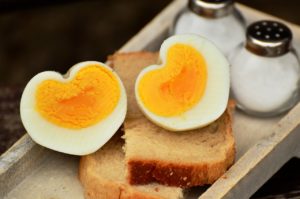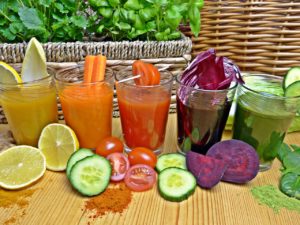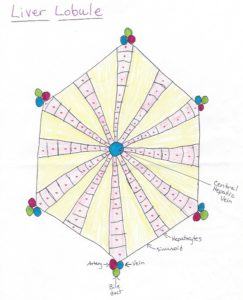Cholesterol Basics [Show Notes]

Fat Basics
Fats don’t mix with water. Some fats are liquid at room temperature (oils), some fats are solid at room temperature.
Because so much of your body is made up of water, fats are very unhappy there. So your body will take this “head” that likes water, and sticks it on the lipid “tails”.
*Correction: This combination is called a Phospholipid
Then they will form a little ball where all the water-hating tails are inside, and all the water-liking heads are on the outside. This is called a Lipoprotein.
Cholesterol
LDL = Low-density lipoprotein (“Bad”) HDL = High-density lipoprotein (“Good”)
Density = the amount of stuff you can cram in a limited space
– A lot of stuff in a small space = high density
– A little bit of stuff in a big space = low density
In the lipoproteins, extra proteins are added to help direct it where to go. HDLs have more proteins to help them stay focused than LDLs, so LDLs are like distracted drivers…
The Egg Controversy (while I avoid a lot of HuffPost articles, and I don’t know much else about this author, I agree with 90% of what he says here – and that’s more than I can say about other information I find out there)
LDLs also have more triglycerides crammed into them. Triglycerides have 3 water-hating tails instead of one.
What’s the magic number?
You don’t need your cholesterol number to be zero. You need cholesterols to build cell membranes and hormones, you just don’t want there to be too much of it.
So the LDLs are less directed so they end up crashing into each other and sticking together. Then if they crash into the artery wall, they may get stuck there and just becomes a place where more stuff can get stuck. This is how atherosclerosis and blockages happens. A bunch of cholesterol is stuck to the walls of the arteries.
There is NO magic number!
HDL: > 40 men, > 50 women
LDL: < 100
Trigs: < 150
TC: < 200
The Bottom Line
HDLs and LDLs are the types of packages your body uses to carry fatty acids around your body.
The main hub of all this cholesterol packing and shipping and using is your liver. Once the liver is done using all the fatty acids it needs, if there’s a bunch extra, it starts packing them away into adipose (or fat) tissue and storing it wherever it can around your body. And there is NO LIMIT to the size of the fat stores!
The Statin Controversy (this is a great summary – the bottom line being that the people recommending “statins for everyone” stand to benefit greatly in their pocketbook if more people in the world actually started taking (aka buying) statins.
Familial Hypercholesterolemia = genetically inherited high cholesterol
Lifestyle changes (eating healthy foods and an appropriate amount of exercise) can never be bad for you!
If you take your coffee the “bulletproof” way, consult your doctor first.
Connect with me
Support us on Patreon
*NEW* Join the Pharmacist Answers Podcast Community on Facebook
Subscribe: iTunes, Stitcher, GooglePlay, TuneIn Radio
Music Credits: “Radio Martini” Kevin MacLeod (incompetech.com) Licensed under Creative Commons: By Attribution 3.0 http://creativecommons.org/licenses/by/3.0/


